Children playing with blocks as toddlers through preschool and into the early elementary years is an invaluable education. While playing with blocks, children learn and expand on a variety of skills as they pass through multiple stages of development.
In the classroom, it was fascinating (and also sometimes hilarious) to see my kids playing with blocks and make observations about their social, emotional, physical, and academic growth.
But, before going into the benefits of block play for your child, let’s first talk about a few basics.
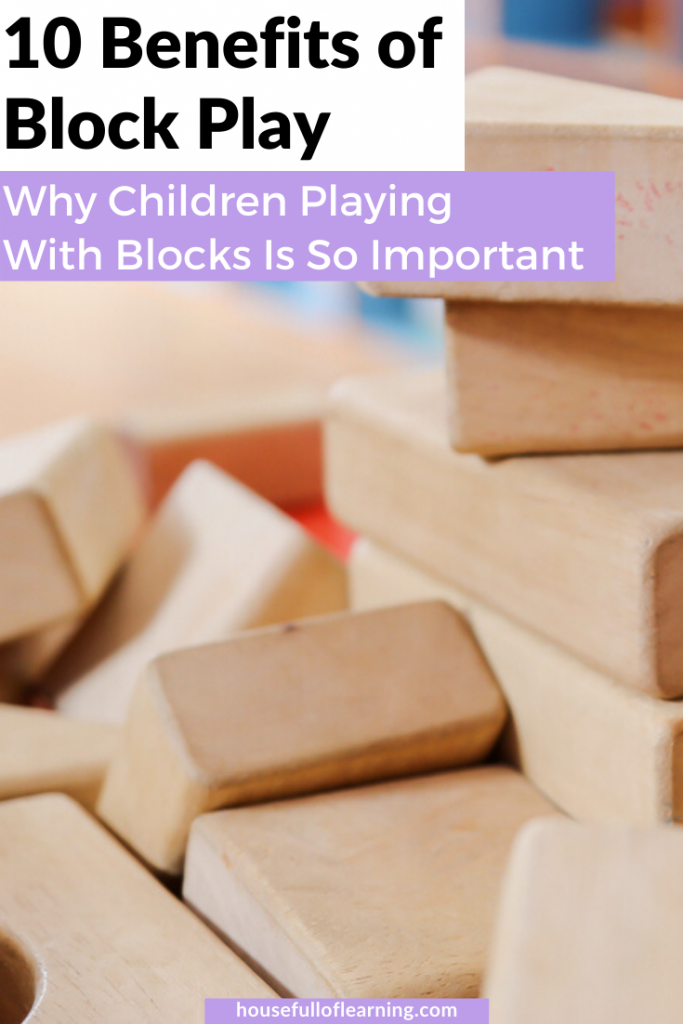
What is Block Play?
Block play will be different depending on your child’s stage of development. However, the constant throughout are the blocks themselves. Specifically, large, wooden blocks in a variety of shapes and sizes are the best. They’re non-descript, raw materials that allow children to play, construct, and create according to their own ideas, without guiding them to build in a certain way.
Stages of Block Play
As you might imagine, a toddler and a 6 year old playing with blocks will not be the same. But age isn’t the only factor seperating one stage from the next.
A child who has continually played with blocks from their earliest days will be more adept at bringing their visualizations to life with wooden blocks. Simply put, they’ve had plenty of prior experience using this raw material compared to a child of the same age picking them up for the first time.
But, block play also reflects your child’s understanding of the world around them. Playing with wooden blocks is not just the building of a house or tower. It’s where your child creates, works through, and makes sense of what they’re learning about their families and communities.
Typically, these are the stages of block play you’ll see your child progress through. Sometimes, she/he might even be in 2 stages at once. And, the age ranges are broad and generous, allowing kids the latitude to learn at their own pace.
Stage 1
A baby’s first interactions with wooden blocks will be all about exploring the tangible, solid material of the blocks themselves. Babies might clap the blocks together and be surprised by the clacking sound. They’ll put them in their mouths, carry them around, and might even throw them. Through these types of actions, babies discover and learn about the physicality of the blocks.
Stage 2
Block play for toddlers progresses into the beginning phases of stacking. You’ll start to notice your child placing one block on top of another or one next to another in rows that stretch outward.
This early play helps develop the fine motor skills and visual perception children will need to advance from stacking to basic structures.
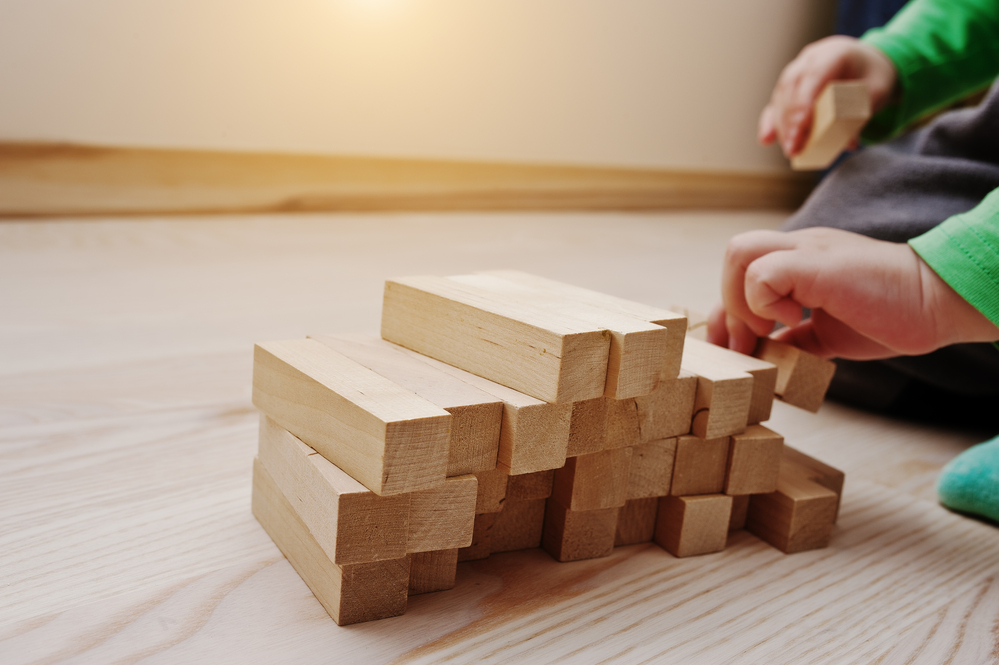
Stage 3
As children become more comfortable with the blocks, they’ll begin to test the ideas of balance and sturdiness by stacking the blocks to create simple doorway or bridge structures. Picture 2 blocks standing with a third one placed across the top.
As blocks topple (by design or on purpose 
Stage 4
Preschool block play develops into areas that are walled-in or surrounded by the blocks. Spatial calculations about block sizes help children determine the perimeter of their constructive play.
Block structures continue to be low to the ground but these constructions may begin to take shape in the child’s imagination as familiar places like a park or a farm. A cow or a horse might even appear inside said enclosure.
Stage 5
Children in this phase experiment with patterns and symmetry. They want their structures to be even, balanced, and elaborate. Yet, at this stage of block play, children use a lot of blocks for what they’re building. To achieve the balance and symmetry they want, though, children will start to problem solve as they look for different size blocks that equal the whole they need. (They’re problem-solving and developing important STEM skills without even realizing it!)
These structures and their related accessories like animals, people, and cars take center stage in the child’s imaginative play and are a window into what a child is learning about the world around them.
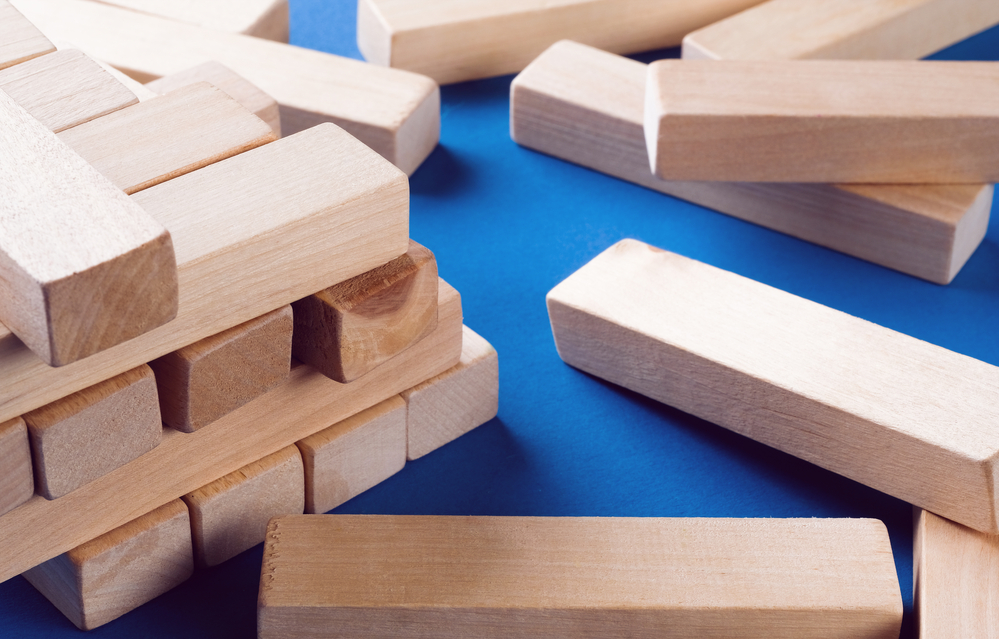
Stage 6
As children move through Kindergarten, block play evolves into named structures that become increasingly detailed and realistic. While building and through dramatic play, children “realize” their buildings may need things. Or questions may come up that need investigating.
For example, a two-story house with no way to reach the 2nd floor becomes an exercise in problem-solving. Or after having built a veterinarian’s office, children may wonder what they need for the exam room and seek out photos to inform their building.
In this stage, families that block build at home or use block building as the foundation of a home social studies curriculum can incorporate planning, building, researching, and then applying this learning over a few days before starting fresh again. The planning phase, in particular, makes for the perfect field trip opportunity to visit the farmer’s market, Post Office, or bakery as children explore their communities. Take a clipboard and have them draw and make notes of what they see so they can apply their research later.
Stage 7
The benefits of learning through block show themselves in numerous ways through the complex structures created by children in this phase. They are expert builders who can plan and create realistic structures that represent the buildings from their communities and their research.
Layered on top of their understanding of the blocks, their measurements, and fractional equivalents, children build sturdy stable structures that are as tall as them. When confronted with a building challenge, they’re able to make observations about their structures and figure out possible solutions.
These skills are now the footing for children who are ready to research and represent historical studies through blocks. With still developing skills in literacy, children who have built with blocks from their earliest days can skillfully show the depth of their understanding of a particular subject through realistic, block representations.
Similarly, their dramatic play with block play people symbolizes the appropriate role of these community workers or historical figures. It’s also a place where their learning and understanding are talked through, becoming a pre-writing activity that can lead to the writing of a story or a research paragraph.
In my 2nd grade classroom, after years of block building, my class researched and built the Brooklyn Bridge. It was always fascinating to see how it turned out. Every class of kids created their own representation of the bridge even though each year it looked different from the last. This culminating block activity went together with research about how the bridge was really built and the people who built it for a project that combined social studies, reading, writing, and STEM activities.
10 Benefits of Block Play
The importance of block play activities cannot be overstated and go far beyond building motor skills and creativity and imagination. I’m confident your child will gain key skills whether you add block play to your child’s daily routine or homeschool.

1. Problem Solving
From the earliest stage of block play, babies learn they can’t carry or move all the blocks they want at one time and need to figure out how to do this step-by-step. Your child will experiment with balancing blocks on top of one another until she/he realizes how to make a tower stand tall or a solid passageway for their toy cars to drive through.
As buildings become more complex, all kinds of problems needing solutions will present themselves starting with the planning phase. Decisions will need to be made about which blocks to use for a solid foundation, how tall a building should be, and what types of rooms or spaces it’ll need.
As building progresses, areas may need to be reconfigured or refined to make sure a feature can fulfill its purpose. This type of nimble thinking develops through block play and can be applied well past the block building years, whether for math problems, science experiments, creative writing, or empowering your child to contribute on obstacles around the house.
2. Confidence
There’s no denying the triumphant expression of a toddler who has successfully stacked one block on top of another to build that tall tower they’ve been working on. And, as children grow, they’re able to set goals about what to build and bring that visualization to life through their block play.
The more children build with blocks, the more problems they’ll have to solve. Their successful solutions to hurdle past these challenges become a self-fulfilling way of thinking. They’re confident to have figured a problem out and believe they can do it again. This repetition is powerful, cultivating feelings of confidence that extend beyond block play.
3. Focus
Block play is the essence of self-directed learning, even from the eariliest stages. A baby who claps together 2 blocks was curious to know what would happen as a result of that action. A child who decides to build a supermarket after having gone shopping with an adult is interested in revisiting this experience.
With the enthusiasm and drive coming from the child, she/he will continue on until accomplishing that goal. In the process, they’re naturally strengthening their ability to concentrate and stick with something. And best of all, it doesn’t feel hard because it’s coming from a genuine place of interest and curiosity that started with them.
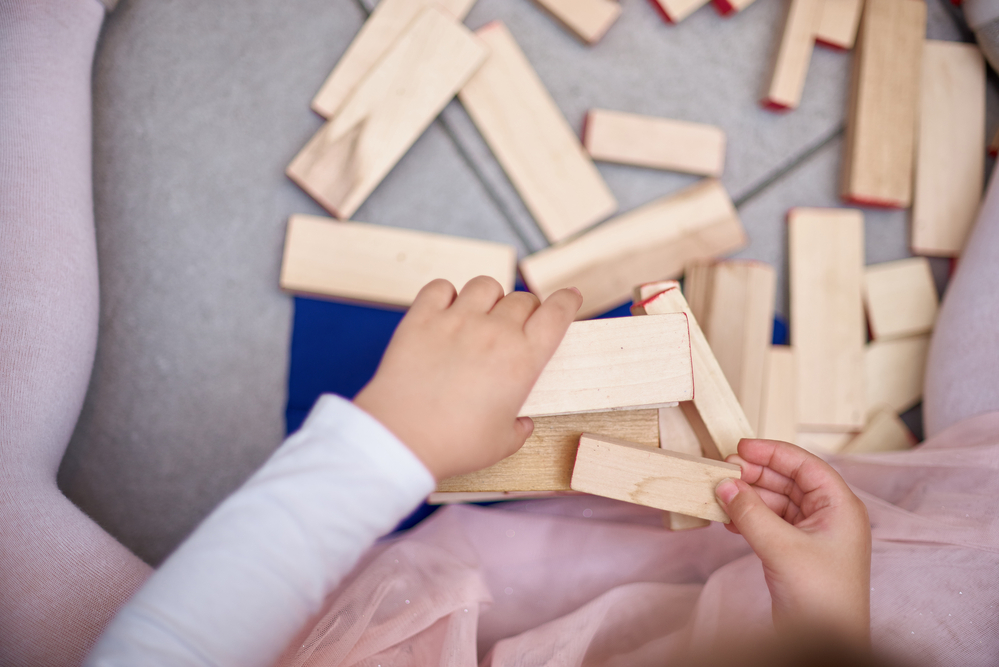
4. Autonomy
If you added up the sum of the first 3 block play benefits listed above, you’d certainly land on autonomy.
A child who can self-start based on an interest or curiosity, then, go on to build based on that vision has the foundations of an autonomous learner. Now, combine those skills with the ability to focus on that goal and problem-solve as challenges arise and you’ve discovered the recipe for autonomy.
As a classroom teacher who used blocks every day, these skills spilled over into all academic areas from social studies research to artistic explorations to being immersed in an exciting chapter book for a lengthy period of time.
5. Social Studies Research
I used block play in my classroom as the crux of my social studies curriculum, so I’m a bit biased on this one. Daily block building activities are great tools for social studies learning!
Children learn to make symbolic representations of the world around them, whether connected to their homes and families, their communities or as they explore historical research. Through their explorations of these structures, questions are asked about the roles of people and places, which leads to a deeper understanding of how families, neighborhoods, and communities are interconnected.
To find the answers to these questions, research skills must be developed. This could mean studying a photo, visiting a place in person to make drawings, or using text-based sources to learn more about how to realistically show a place and act out the related human interactions that could happen there.
6. Spatial Perception
Block play lends itself to spatial perception skills when children imagine what they want to build and bring it to life with a raw material like blocks. This develops from a deep understanding of the properties of those blocks and how they relate to each other depending on their positioning. As block-builders problem solve, they also need to mentally reposition or rotate blocks to test solutions before applying them.
But spatial perception also relates to the child understanding their body in relation to their structure. Elementary-aged students who’ve been block building since babies can navigate the tight spaces between block buildings without knocking anything over. With this understanding, it’s easy to see how this physical body awareness translates beyond block building.

7. Mathematical Concepts
From counting blocks to build a sense of 1-to-1 correspondence to combining equivalent fractional blocks to create the needed size, children who take part in block play have early, regular exposure to math concepts.
If a child who is read to acquires listening vocabulary that eventually will help them recognize those words in print and attach appropriate meanings, then the same is true for block play and math. From developing an understanding of length, width, height, and depth to patterns, shapes, and symmetry, children gain an early foundation for things like measurement and geometry without realizing what they’re officially called.
I must admit though, my personal favorite was watching my students understand which 2 or 3 blocks were equal to a larger one. Having had such a hard time with fractions in school myself, I always wished I had developed this early understanding before hitting 5th and 6th grades!
8. Scientific Thinking
From the first stage of block play, babies explore the physicality of the blocks. This includes learning about the concept of weight as they carry them around and clapping or crying at the sight of them falling because of gravity. As building skills progress, children learn how to stabilize building supports and balance bridges and archways. They tune their understanding of cause and effect which each block play decision.
The essence of the scientific method involves making an educated guess about a problem or question and then testing out possible solutions. Block play nurtures these skills through problem-solving and finding answers to questions in an effort to represent a place as truthfully as possible.

9. Language Arts Skills
Through block play, children have the chance to talk through their ideas, learn new vocabulary that is specific to the blocks’ names and shapes or the places they’re building, and create hand-made signs and labels that identify the name and features of their structure.
Elementary-aged children integrate community studies, mapping skills, realistic dramatic play, and historical research to their block play. Along with these things comes the need to read more about a place, learn directional terminology, and even compose pieces of writing about a building or the people who live or work there.
10. Social Skills
Whether building with siblings, classmates, cousins, or friends, block play with others hinges on collaboration and a willingness to blend ideas to achieve the overall goal. Without these things, the whole project could (literally) crumble to the ground.
This makes block play is the perfect place to practice verbal communication, the sharing of resources and ideas, and the art of compromise. (More problem-solving!) As your child develops through block building, she/he will need to explain their ideas, listen to other’s ideas, talk through the planning phases, and negotiate with others throughout the building process.
Don’t these sound like the qualities of an awesome friend!?
Block Play Resources
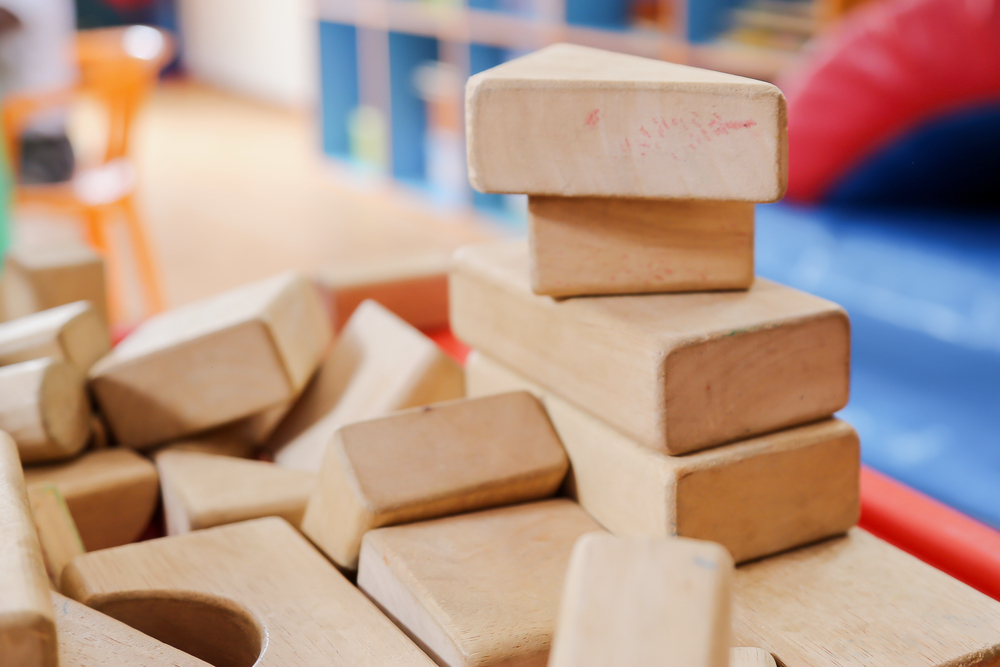
If you’d like to learn more about Block Play, I recommend picking up a copy of The Block Book.
To get started at home, you’ll also need to have a set of wooden blocks. I recommend going with standard wooden blocks that are free of color and labeling. Essentially, plain wooden blocks are like having a blank canvas with nothing to sway or encourage what is ultimately created.
Regular block play is one of the best gifts you can give your child. The investment value made to purchase the blocks and the time dedicated to block building will return many times over as your child grows!
What are your questions about the value of block play?
Like this post? Please save on Pinterest for later or use the social buttons to share on social media.

Leave a Reply